Maniacs tea: tea market in Guangzhou
 Bashny.Net
Bashny.Net
The blogger writes toxaby:
The Chinese drink tea. The Chinese drink a lot of tea. I sometimes think that the Chinese do not drink water, because even when you ask the local water chifanke (edalni) - they bring you ooooochen weak but tea. Yes, it is tasty, yes, tones. And that's good.
In this post a few pictures with a conventional, non-touristic tea market in Guangzhou City, which specializes in expensive varieties. Also - how to brew the same Pu Erh, dear Chinese teas in general, and a small quiz - to define - what tea pictures tea leaves. If anything - even to the last question, I do not know the correct answer
36 photos
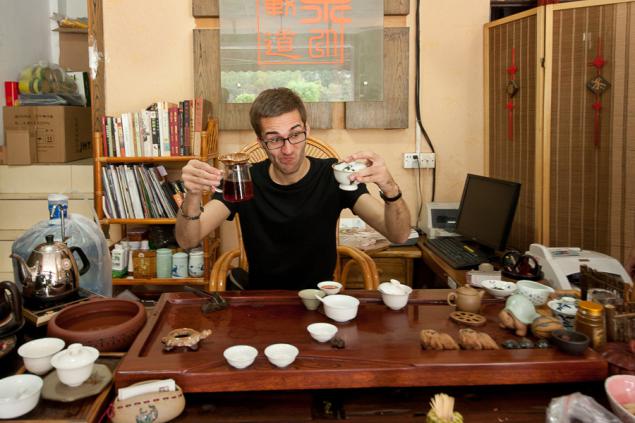
Market. Again, typically in China "market" - not quite what we are used to represent Belarus. However, tea - the market even as it is similar to the market. In the photo there are almost no people - I repeat in Guangzhou I believe somewhere in the 3 large tea market and the tens and hundreds of outlets that sell the same good tea, though a bit more expensive.
Tea Market Fang Cun 芳村 (fantsun or something like that) - the largest in the city (the province, the country, the planet?) Tea market. Here you can buy any tea
2. This sort of shops, partially eaten one roof.
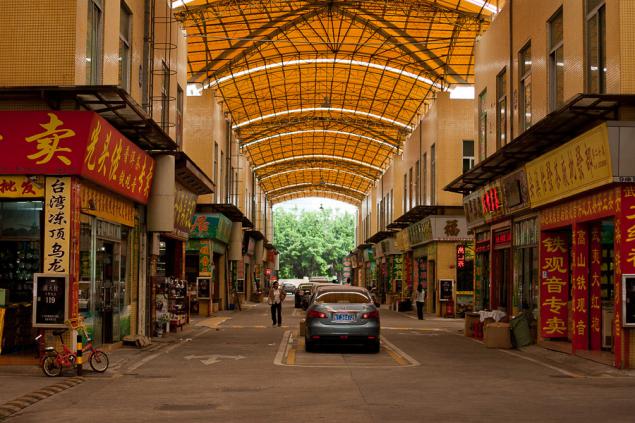
3. Offhand - in this market of 30-50 pieces here shops. And everyone tries to sell "your grade."
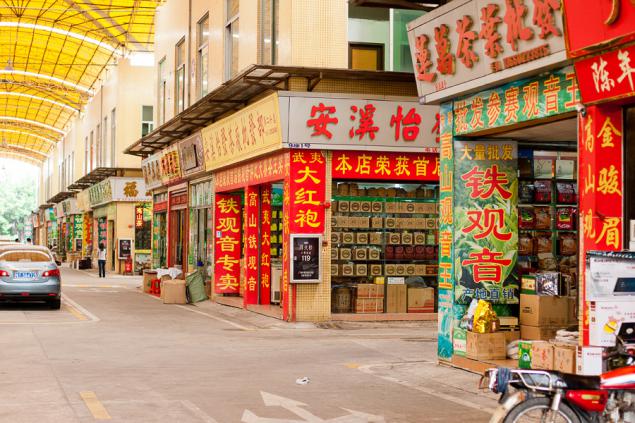
4. For example here we bought Puer (Chin. Ex. 普洱茶, pinyin: pǔěrchá - «Puer tea") and TIEGUANYIN (Chin. Trad. 鐵 觀音, Ex. 铁 观音, pinyin: tiěguānyīn)
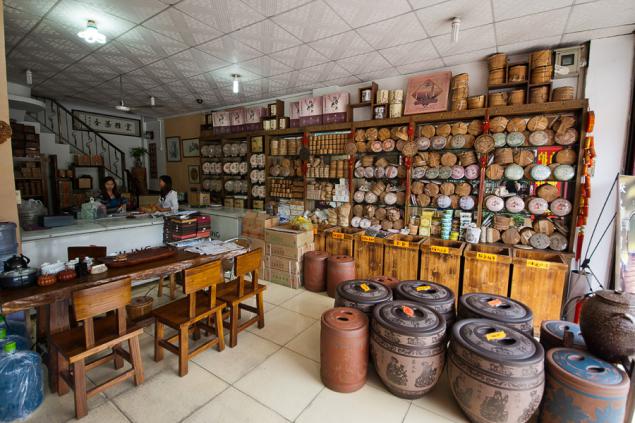
5. Here, for example pancakes Puer

6.
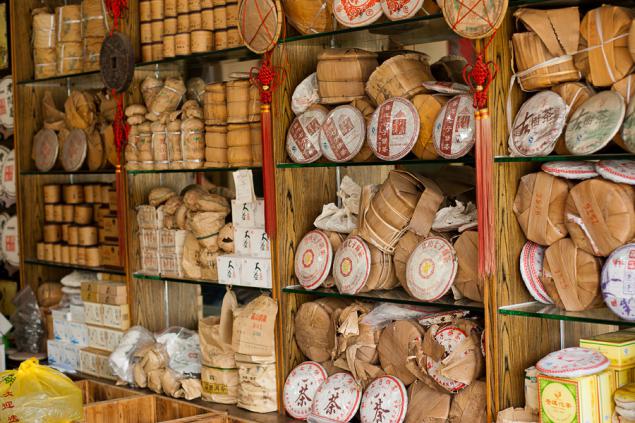
7. Conducted in the 80's. XX century in France, studies have shown that raw Puer helps reduce cholesterol levels in the blood and prevents the seal vessel walls. According to popular in China and among connoisseurs Puer worldwide opinion, this tea helps to digest fatty foods, to quench their thirst, to cope with a hangover, and food poisoning

8. There Puer loose, there are pancakes, and there are here so that's pills. What's interesting - the Chinese themselves (sellers) is not very fond of Puer in these tablets. And when I tried - I do not really like. Although, like - 12 years, all the cases ...
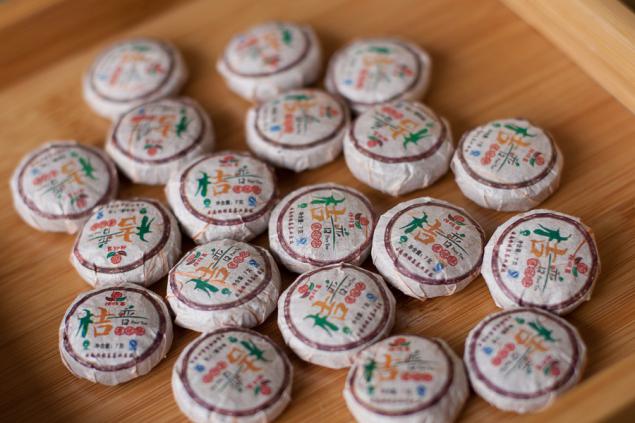
9.
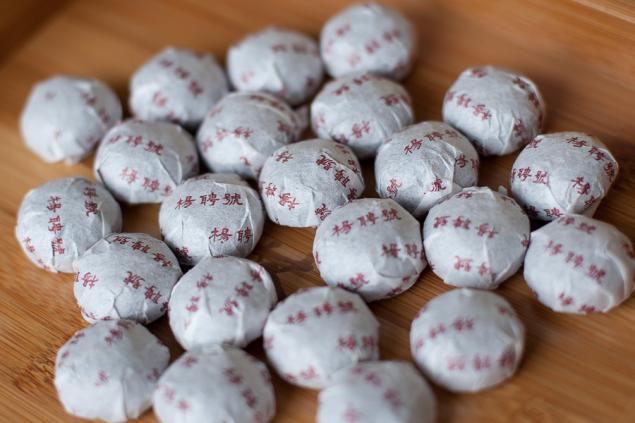
10. These are the pancakes I had brought to Minsk, since according to Artyom - this is the best, according to him tea in terms of price quality. Others, standing about the same - not as good as those that are better - worth $ 50 for 50g and above. In general, expensive Chinese tea - very expensive, but this is the end.
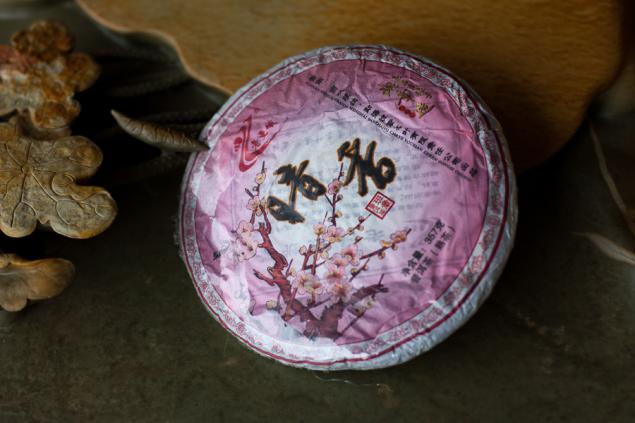
11.

12. That Puer "bricks" for example)
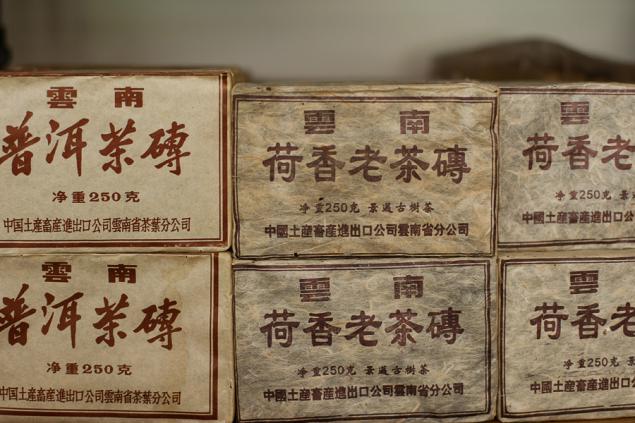
13. What's so close and I do not know), but also tea. I think so)))
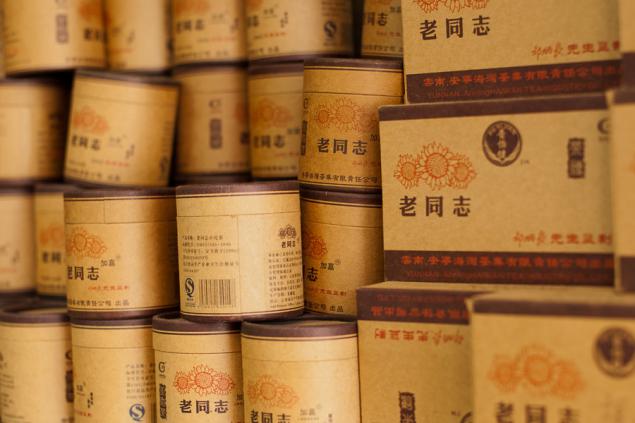
14. Now to the question about the type of the famous' tea ceremony ».
That's be honest - I do not know where it all took this name. Well, there is no such. "The tradition of tea drinking" - yes, but "ceremony" ... well, I do not know ...
In all, even in the Department of tea in the supermarket offers a cup of tea, and different. This is normal. I remember when I was in 2010 and bought a tea house - 3 tiddly drank a cup of tea at a shop in the evening - was only able to sleep somewhere at 4 am)))
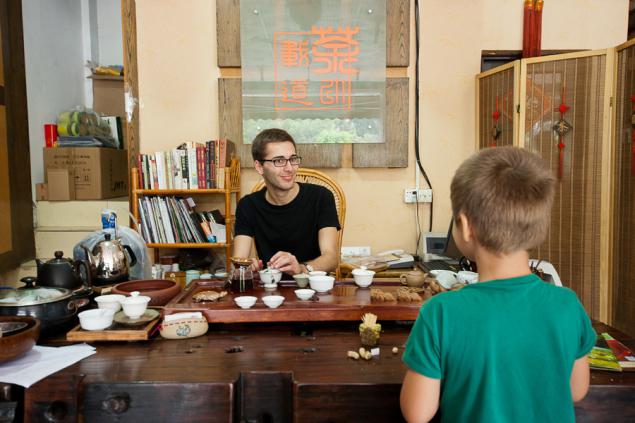
15. As we sat drinking tea yes (by the way, do not ever give up on tea - the Chinese perceive it as disrespect, and it really is), girls pomoshnitsa Puer packed in cellophane film

16.
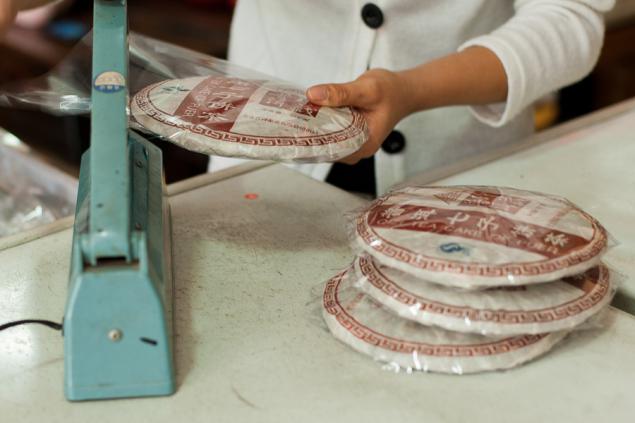
17.
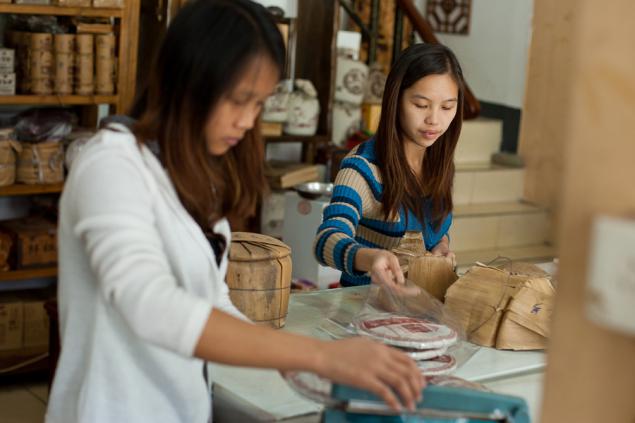
18. In almost every shop will have a choice of dishes for cooking and drinking tea.

19. Here, for example the opening for me on this trip - so called "bulb". I am very sorry that he took home only one little thing - a handy thing is unreal. Instead of brewing tea in a cup (which is very wrong), it is convenient to brew it. Inside the glass bulb with another filter down through the 1-5 minutes to get it from a large bulb, the water is drained through a filter - and pour into a cup large and small. And so zavarok 4-5-6.
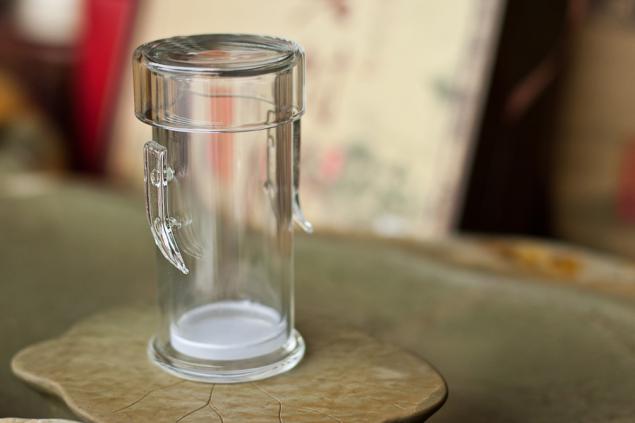
20. And when they saw this set - for a long time tried to lift his jaw off the floor. Color - unreal. Teapot, where the tea is brewed, tea, where tea is brewed waiting in the wings, and small cups. 190 yuan worth like. I do not remember exactly.
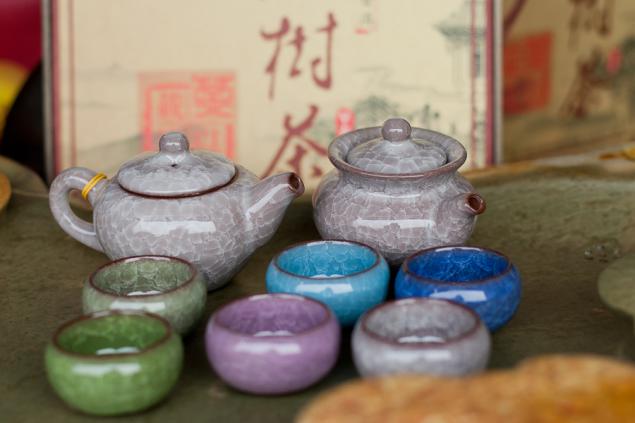
21. Several pictures from there just

22.
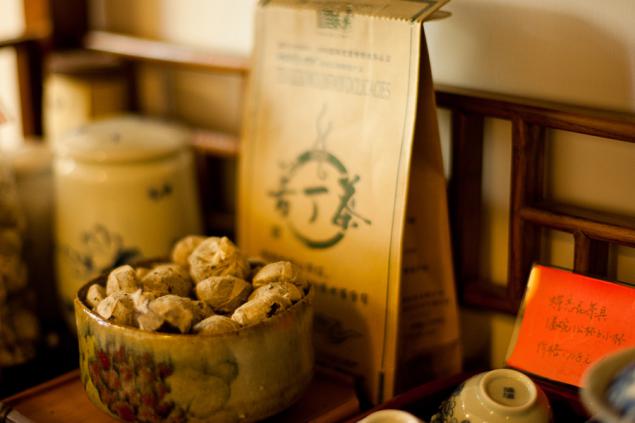
23.
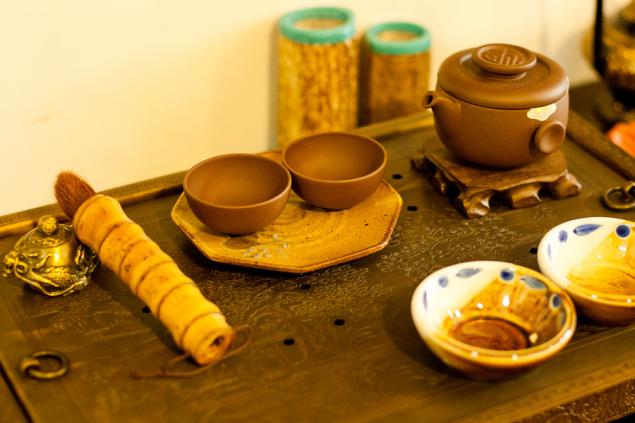
24.

25. And now a little quiz.
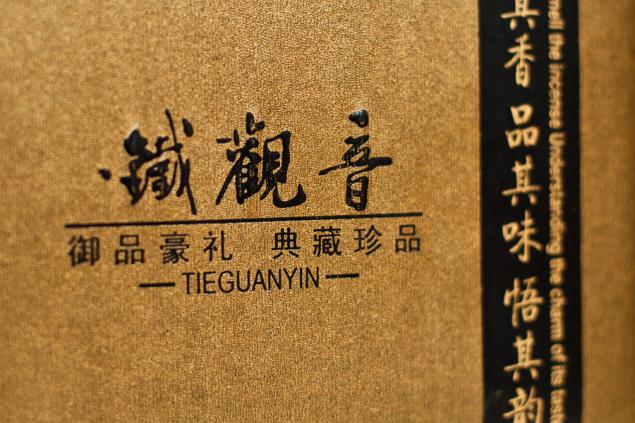
26. Below - just tea.

27.
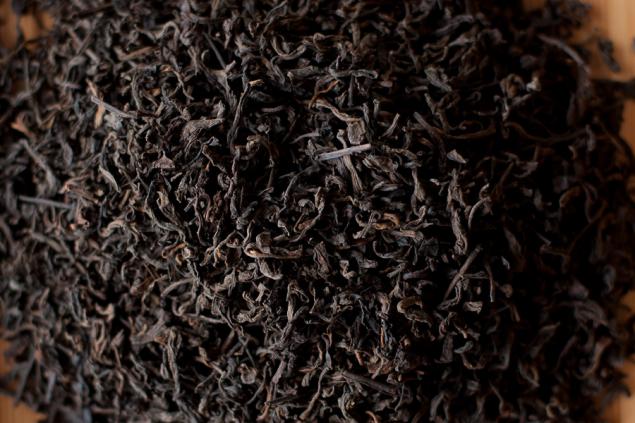
28.
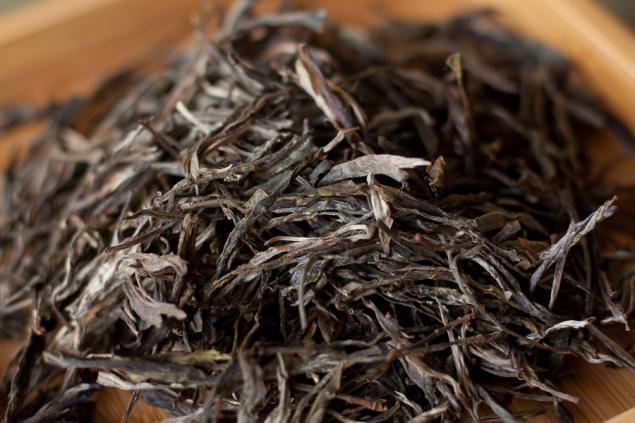
29.
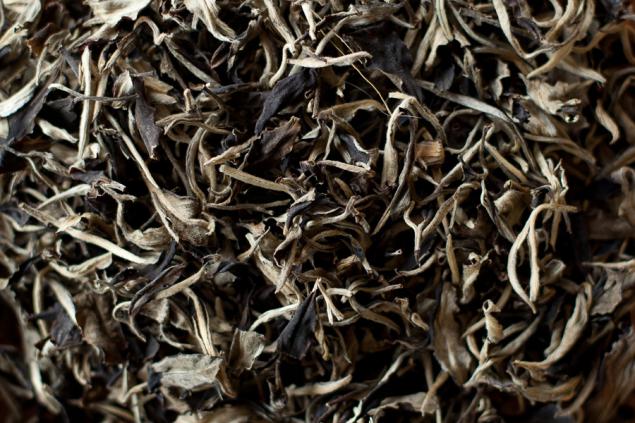
30.
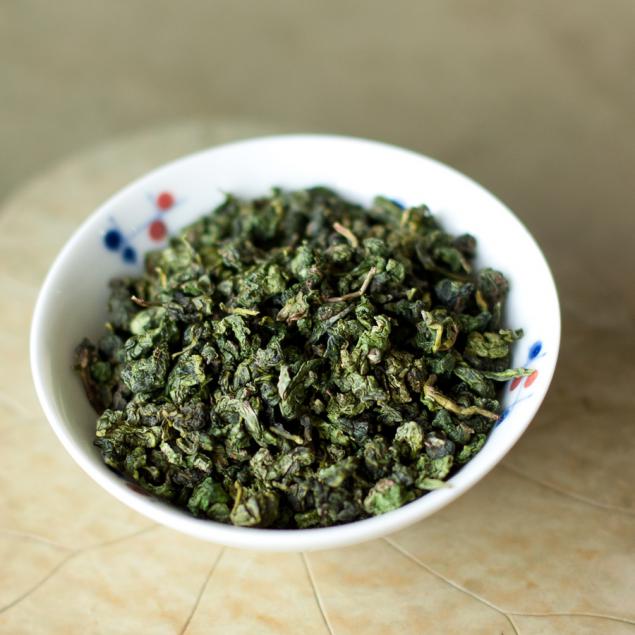
31.
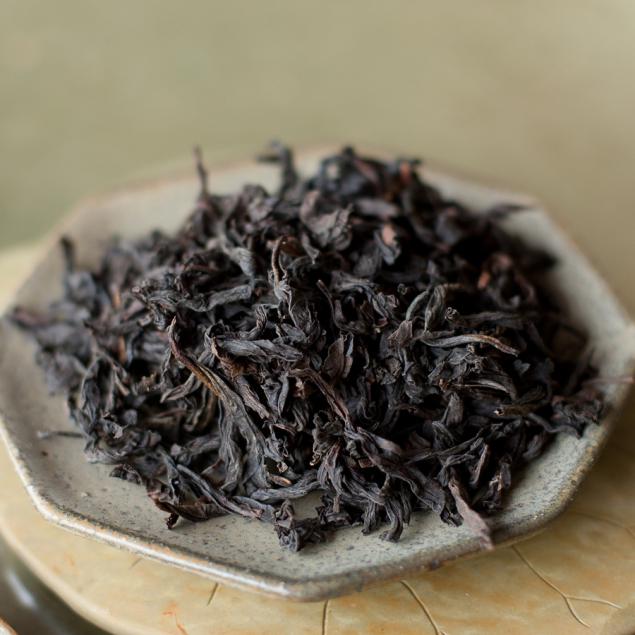
32.

33.
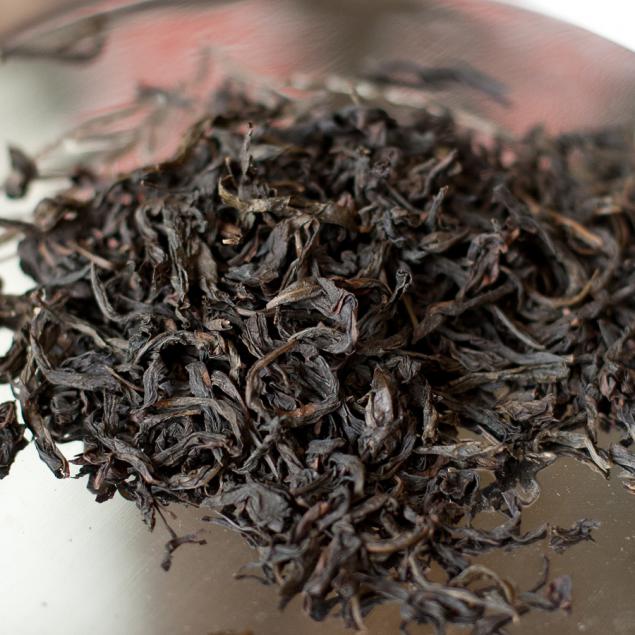
34
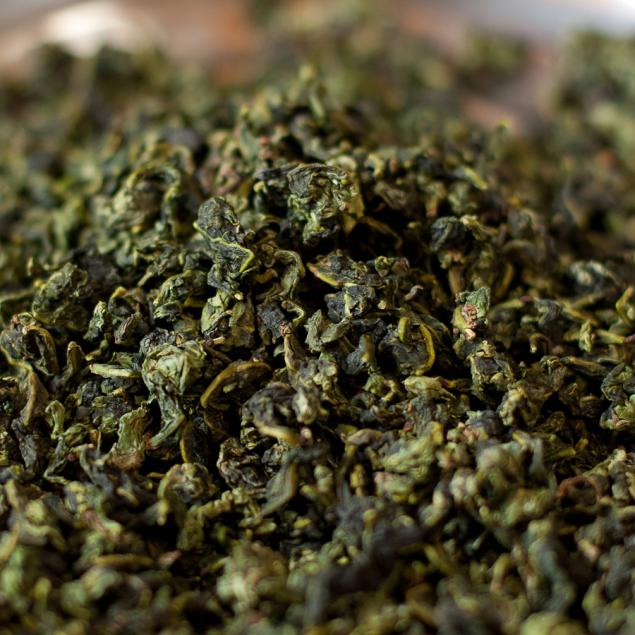
35. This is how the shop looks the part.

36. Well, we all fed and watered tea
As for how to brew Chinese tea.
I must say that I am not an expert. And just do as the Chinese do, guided by the rule - it is no wonder they did just so and not otherwise.
So.
Puer. The water was 95 degrees - fill the kettle with Puer - and 30 seconds to pour. This is called disinfection. In fact - the first to pour the tea leaves - this is usually expensive for almost all Chinese teas.
Next to Puer's simple - not boiling - 90 degrees - to pour tea for 1 minute, pour brewed tea in a teapot. After a fourth somewhere welding - 1, 5 minutes. Over time, he pretends to be about how to keep the tea in the water.
IMPORTANT - do not hold the tea leaves in hot water. Brew the right time - pour the brewed water into teapot or mug.
Here is what Wikipedia:
There are several ways of cooking Puer. For brewing the average take 4gr Tea 150 ml of water
You can find recommendations for pre-washing and / or roasting before Puer tea leaves. Flushing removes dust and frying provides disinfection as long-term storage Puerh makes possible the development of microorganisms in it. Very fast rinse with boiling water - in this case, provided both dust removal and disinfection. In any case, in the form of pressed Puer "pancake" crumbles before brewing, and sometimes even more finely pounded.
Strictly brewing (in the kettle or gaiwan) occurs quite traditional - Puer poured hot water temperatures close to boiling. By the time the infusion is also possible options. Often recommended to insist first welding (welding of the first two) Puer just a few seconds, then immediately pouring the infusion, and at repeated brewing to increase the exposure of 15-30 seconds each time. In this mode, pu-erh can withstand depends on the age and quality, from 5 to 10 zavarok. There are fans of brew Puerh with a large exposure - up to several minutes. In this case, re-brewing maybe no more than 1-2 times, and the resulting infusion has a more pronounced flavor.
Eat small portions taken to assess not only the taste, but the aftertaste.
The rest I brew tea on the same principle - the first brew is drained, then - 3-4 minute brew - and merges into the teapot brewed water. Good oolong teas brewed from 5-7 up to 10 times. This is no exaggeration. The most delicious brew tea for me - 3, 4 and 5. Then he (tea) becomes very easy to taste and drink the water), but also delicious.
With regard to prices, Chinese teas. This lower - about mid-expensive teas, because as I already wrote above - is absolutely rare tea for $ 50 per 50 grams.
We Artem photographed 4-5 species of the same type of tea. For example the same Da Hong Pao cost 100, 200, 400 and 800 (I figuratively, the exact amount I do not remember, remember that began with 100 yuan and ends 600-800 yuan) per 500 grams.
1 dollar = 6, 3 yuan to the days when I was in Guangzhou.
Ie, the classic 100gramm tea on our money - it is 20 euros, roughly speaking, for the "best" of the good grades. And that price in China, is not a tourist spot for their "own". Ie Minsk + shipping + wrapping + tax = do not know how much. And it turns out that in Minsk usually sell for $ 10 for 100g. Why?
As I explained to Tom, then option 2.
1) the cheapest variety (for 100yuaney - it is somewhere $ 15 per 500g) - giving it in Minsk on the road.
2) takes part 4, for example, cheaper grades and mixed with one part expensive. For sale at the price of expensive + wrapping (the most common variant in Moscow). A man versed in these kind of teas and notices a familiar taste at the expense of expensive, but it's like whiskey diluted juice) Okay, I agree, the comparison inappropriate)

Source:
The Chinese drink tea. The Chinese drink a lot of tea. I sometimes think that the Chinese do not drink water, because even when you ask the local water chifanke (edalni) - they bring you ooooochen weak but tea. Yes, it is tasty, yes, tones. And that's good.
In this post a few pictures with a conventional, non-touristic tea market in Guangzhou City, which specializes in expensive varieties. Also - how to brew the same Pu Erh, dear Chinese teas in general, and a small quiz - to define - what tea pictures tea leaves. If anything - even to the last question, I do not know the correct answer
36 photos

Market. Again, typically in China "market" - not quite what we are used to represent Belarus. However, tea - the market even as it is similar to the market. In the photo there are almost no people - I repeat in Guangzhou I believe somewhere in the 3 large tea market and the tens and hundreds of outlets that sell the same good tea, though a bit more expensive.
Tea Market Fang Cun 芳村 (fantsun or something like that) - the largest in the city (the province, the country, the planet?) Tea market. Here you can buy any tea
2. This sort of shops, partially eaten one roof.

3. Offhand - in this market of 30-50 pieces here shops. And everyone tries to sell "your grade."

4. For example here we bought Puer (Chin. Ex. 普洱茶, pinyin: pǔěrchá - «Puer tea") and TIEGUANYIN (Chin. Trad. 鐵 觀音, Ex. 铁 观音, pinyin: tiěguānyīn)

5. Here, for example pancakes Puer

6.

7. Conducted in the 80's. XX century in France, studies have shown that raw Puer helps reduce cholesterol levels in the blood and prevents the seal vessel walls. According to popular in China and among connoisseurs Puer worldwide opinion, this tea helps to digest fatty foods, to quench their thirst, to cope with a hangover, and food poisoning

8. There Puer loose, there are pancakes, and there are here so that's pills. What's interesting - the Chinese themselves (sellers) is not very fond of Puer in these tablets. And when I tried - I do not really like. Although, like - 12 years, all the cases ...

9.

10. These are the pancakes I had brought to Minsk, since according to Artyom - this is the best, according to him tea in terms of price quality. Others, standing about the same - not as good as those that are better - worth $ 50 for 50g and above. In general, expensive Chinese tea - very expensive, but this is the end.

11.

12. That Puer "bricks" for example)

13. What's so close and I do not know), but also tea. I think so)))

14. Now to the question about the type of the famous' tea ceremony ».
That's be honest - I do not know where it all took this name. Well, there is no such. "The tradition of tea drinking" - yes, but "ceremony" ... well, I do not know ...
In all, even in the Department of tea in the supermarket offers a cup of tea, and different. This is normal. I remember when I was in 2010 and bought a tea house - 3 tiddly drank a cup of tea at a shop in the evening - was only able to sleep somewhere at 4 am)))

15. As we sat drinking tea yes (by the way, do not ever give up on tea - the Chinese perceive it as disrespect, and it really is), girls pomoshnitsa Puer packed in cellophane film

16.

17.

18. In almost every shop will have a choice of dishes for cooking and drinking tea.

19. Here, for example the opening for me on this trip - so called "bulb". I am very sorry that he took home only one little thing - a handy thing is unreal. Instead of brewing tea in a cup (which is very wrong), it is convenient to brew it. Inside the glass bulb with another filter down through the 1-5 minutes to get it from a large bulb, the water is drained through a filter - and pour into a cup large and small. And so zavarok 4-5-6.

20. And when they saw this set - for a long time tried to lift his jaw off the floor. Color - unreal. Teapot, where the tea is brewed, tea, where tea is brewed waiting in the wings, and small cups. 190 yuan worth like. I do not remember exactly.

21. Several pictures from there just

22.

23.

24.

25. And now a little quiz.

26. Below - just tea.

27.

28.

29.

30.

31.

32.

33.

34

35. This is how the shop looks the part.

36. Well, we all fed and watered tea
As for how to brew Chinese tea.
I must say that I am not an expert. And just do as the Chinese do, guided by the rule - it is no wonder they did just so and not otherwise.
So.
Puer. The water was 95 degrees - fill the kettle with Puer - and 30 seconds to pour. This is called disinfection. In fact - the first to pour the tea leaves - this is usually expensive for almost all Chinese teas.
Next to Puer's simple - not boiling - 90 degrees - to pour tea for 1 minute, pour brewed tea in a teapot. After a fourth somewhere welding - 1, 5 minutes. Over time, he pretends to be about how to keep the tea in the water.
IMPORTANT - do not hold the tea leaves in hot water. Brew the right time - pour the brewed water into teapot or mug.
Here is what Wikipedia:
There are several ways of cooking Puer. For brewing the average take 4gr Tea 150 ml of water
You can find recommendations for pre-washing and / or roasting before Puer tea leaves. Flushing removes dust and frying provides disinfection as long-term storage Puerh makes possible the development of microorganisms in it. Very fast rinse with boiling water - in this case, provided both dust removal and disinfection. In any case, in the form of pressed Puer "pancake" crumbles before brewing, and sometimes even more finely pounded.
Strictly brewing (in the kettle or gaiwan) occurs quite traditional - Puer poured hot water temperatures close to boiling. By the time the infusion is also possible options. Often recommended to insist first welding (welding of the first two) Puer just a few seconds, then immediately pouring the infusion, and at repeated brewing to increase the exposure of 15-30 seconds each time. In this mode, pu-erh can withstand depends on the age and quality, from 5 to 10 zavarok. There are fans of brew Puerh with a large exposure - up to several minutes. In this case, re-brewing maybe no more than 1-2 times, and the resulting infusion has a more pronounced flavor.
Eat small portions taken to assess not only the taste, but the aftertaste.
The rest I brew tea on the same principle - the first brew is drained, then - 3-4 minute brew - and merges into the teapot brewed water. Good oolong teas brewed from 5-7 up to 10 times. This is no exaggeration. The most delicious brew tea for me - 3, 4 and 5. Then he (tea) becomes very easy to taste and drink the water), but also delicious.
With regard to prices, Chinese teas. This lower - about mid-expensive teas, because as I already wrote above - is absolutely rare tea for $ 50 per 50 grams.
We Artem photographed 4-5 species of the same type of tea. For example the same Da Hong Pao cost 100, 200, 400 and 800 (I figuratively, the exact amount I do not remember, remember that began with 100 yuan and ends 600-800 yuan) per 500 grams.
1 dollar = 6, 3 yuan to the days when I was in Guangzhou.
Ie, the classic 100gramm tea on our money - it is 20 euros, roughly speaking, for the "best" of the good grades. And that price in China, is not a tourist spot for their "own". Ie Minsk + shipping + wrapping + tax = do not know how much. And it turns out that in Minsk usually sell for $ 10 for 100g. Why?
As I explained to Tom, then option 2.
1) the cheapest variety (for 100yuaney - it is somewhere $ 15 per 500g) - giving it in Minsk on the road.
2) takes part 4, for example, cheaper grades and mixed with one part expensive. For sale at the price of expensive + wrapping (the most common variant in Moscow). A man versed in these kind of teas and notices a familiar taste at the expense of expensive, but it's like whiskey diluted juice) Okay, I agree, the comparison inappropriate)

Source:
Tags
See also
How to lose weight
A brief guide for those who are going to Chukotka
Rest in Chukotka
How do I lose weight
South Pacific: Fiji and Tuvalu
Travel to Italy
Welcome to the United Kingdom (32 photos)
"You deserve a reward for something that lived with me 20 years." Frank an ex-wife.
11 conventional products, from which we soon recover. So here's the thing!
Raw food diet - conceived by the nature
















